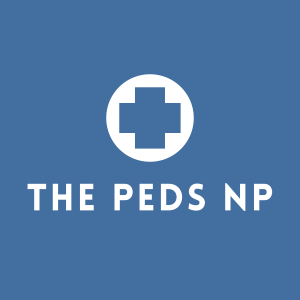
The Peds NP: Pearls of Pediatric Evidence-Based Practice
Health & Fitness:Medicine

Welcome to The Peds NP Acute Care Faculty series! This collaborative series was created and peer-reviewed by national experts and leaders in acute care PNP education to meet the needs of our current and future colleagues. In the push for competency-based education where faculty verify the skills of what a student can do, rather than their knowledge, our series focuses on the application of didactic content with a conversational approach so that you can learn nuances of clinical skills before you reach the bedside.
This episode welcomes the acute care PNP student to clinical, where you’ll learn important bedside lessons that apply your knowledge to practical situations. Our faculty offered advice on preparation, clinical rotation best practices, and how to finish the rotation successfully. There are key pearls and pitfalls to guide the student toward gaining competency in their newfound skills. We acknowledge those pesky doubts that cause imposter syndrome, and encourage the role of the learner. Through it all, your clinical is what you make of it, and you can be confident that you have the skills to competently enter a new role.
This episode was peer reviewed by The Peds NP faculty series peer review team. You can read about our novel and scholarly approach to peer review, review our faculty lineup, and learn more about the series, competency mapping, references, and show notes at www.thepedsnp.com. There was no financial support or conflicts of interest to report. Follow me on Instagram @thepedsnppodcast. Email me at thepedsnp@gmail.com. Remember that this isn’t just a podcast, you’re listening for the kids.
Authors (alphabetical): Becky Carson, DNP, APRN, CPNP-PC/AC, Brittany Christiansen, PhD, DNP, APRN, CPNP-PC/AC, FNP-C, AE-C, CNE, Julie Kuzin, DNP, APRN, CPNP-PC/AC, Priscila Reid, DNP, FNP-C, CPNP-AC, Dani Sebbens, DNP, CPNP-AC/PC
References:
Carley, A., & Garrett, L. (2022). Supporting Role Knowledge and Role Transition in Neonatal APRN Students. Neonatal network : NN, 41(3), 168–171. https://doi.org/10.1891/11-T-752
Clance, P. R., & Imes, S. A. (1978). The imposter phenomenon in high achieving women: Dynamics and therapeutic intervention. Psychotherapy: Theory, Research & Practice, 15(3), 241–247. https://doi.org/10.1037/h0086006
Edwards-Maddox S. Burnout and impostor phenomenon in nursing and newly licensed registered nurses: A scoping review. J Clin Nurs. 2023 Mar;32(5-6):653-665. doi: 10.1111/jocn.16475. Epub 2022 Aug 2. PMID: 35918887.
Lee, T., Lee, S. J., Yoon, Y. S., Ji, H., Yoon, S., Lee, S., & Ji, Y. (2023). Personal Factors and Clinical Learning Environment as Predictors of Nursing Students' Readiness for Practice: A Structural Equation Modeling Analysis. Asian nursing research, 17(1), 44–52. https://doi.org/10.1016/j.anr.2023.01.003
Scanlan JM, Laurencelle F, Plohman J. Understanding the impostor phenomenon in graduate nursing students. Int J Nurs Educ Scholarsh. 2023 Dec 7;20(1). doi: 10.1515/ijnes-2022-0058. PMID: 38053510.
White, A., & Rivera, L. (2023). Increasing Student Confidence Prior to an Obstetric Clinical Practicum. Nurse educator, 48(6), E195. https://doi.org/10.1097/NNE.0000000000001381
More Episodes
 2024-08-12
2024-08-12
 480
480
 2024-07-15
2024-07-15
 350
350
 2024-02-19
2024-02-19
 1.6k
1.6k
 2023-06-12
2023-06-12
 1.6k
1.6k
 2023-05-02
2023-05-02
 1.1k
1.1k
 2023-03-01
2023-03-01
 1.4k
1.4k
Create your
podcast in
minutes
- Full-featured podcast site
- Unlimited storage and bandwidth
- Comprehensive podcast stats
- Distribute to Apple Podcasts, Spotify, and more
- Make money with your podcast
It is Free
- Privacy Policy
- Cookie Policy
- Terms of Use
- Consent Preferences
- Copyright © 2015-2024 Podbean.com





